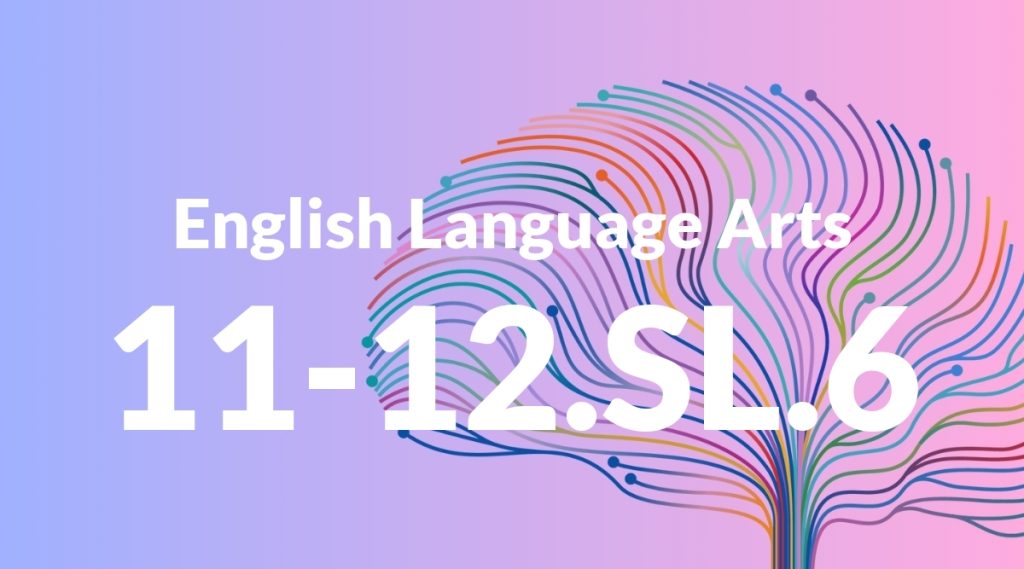Standard: 11-12.SL.6 – Adapt speech to a variety of contexts and tasks, demonstrating a command of formal English when indicated or appropriate. (See grades 11-12 Language standards 1 and 3 here for specific expectations.)
Grade level: Grade 11-12
Subject: English Language Arts
Domain: Speaking & Listening
Teacher Overview
This standard emphasizes the importance of adapting speech to fit a variety of contexts and tasks. Mastery of this standard is crucial for effective communication, as it enables students to tailor their language to suit different audiences and purposes. This skill is vital for both academic and real-world success. Students should be familiar with different registers of English and have basic public speaking experience. They should also understand the importance of context in communication and be able to use rhetorical strategies effectively.
Students will develop the ability to navigate complex communication scenarios, tailoring their language to suit different audiences and purposes. They will gain advanced rhetorical skills and a deeper understanding of language nuances.
Common Misconception 1
One common misconception is that students may believe formal language is always necessary, regardless of the context. This is incorrect because the appropriateness of formal language depends on the audience and purpose of the speech.
Intervention 1
To address this misconception, provide students with various scenarios and have them practice determining the appropriate level of formality for each. Discuss why certain levels of formality are more suitable in different contexts.
Common Misconception 2
Another misconception is that students may think adapting speech means completely changing their speaking style. This is not true, as adaptation often involves making subtle adjustments to tone, vocabulary, and structure.
Intervention 2
To remediate this misconception, show examples of how small changes can make speech more appropriate for different contexts. Have students practice making these adjustments in their own speeches.
Prerequisite Knowledge
Students should have a foundational understanding of the different registers of English, including formal and informal language. They should be able to identify and use basic rhetorical strategies and have experience with public speaking in varied contexts.
Subsequent Knowledge
After mastering this standard, students will be able to navigate complex communication scenarios with ease, tailoring their language to suit different audiences and purposes. They will also develop advanced rhetorical skills and a deeper understanding of language nuances.
Instructional Activities
- Role-playing different scenarios to practice adapting speech.
- Analyzing speeches from various contexts to identify differences in language use.
- Creating and delivering speeches for different audiences and purposes.
- Peer review sessions to provide feedback on speech adaptation.
- Group discussions on the importance of context in communication.




